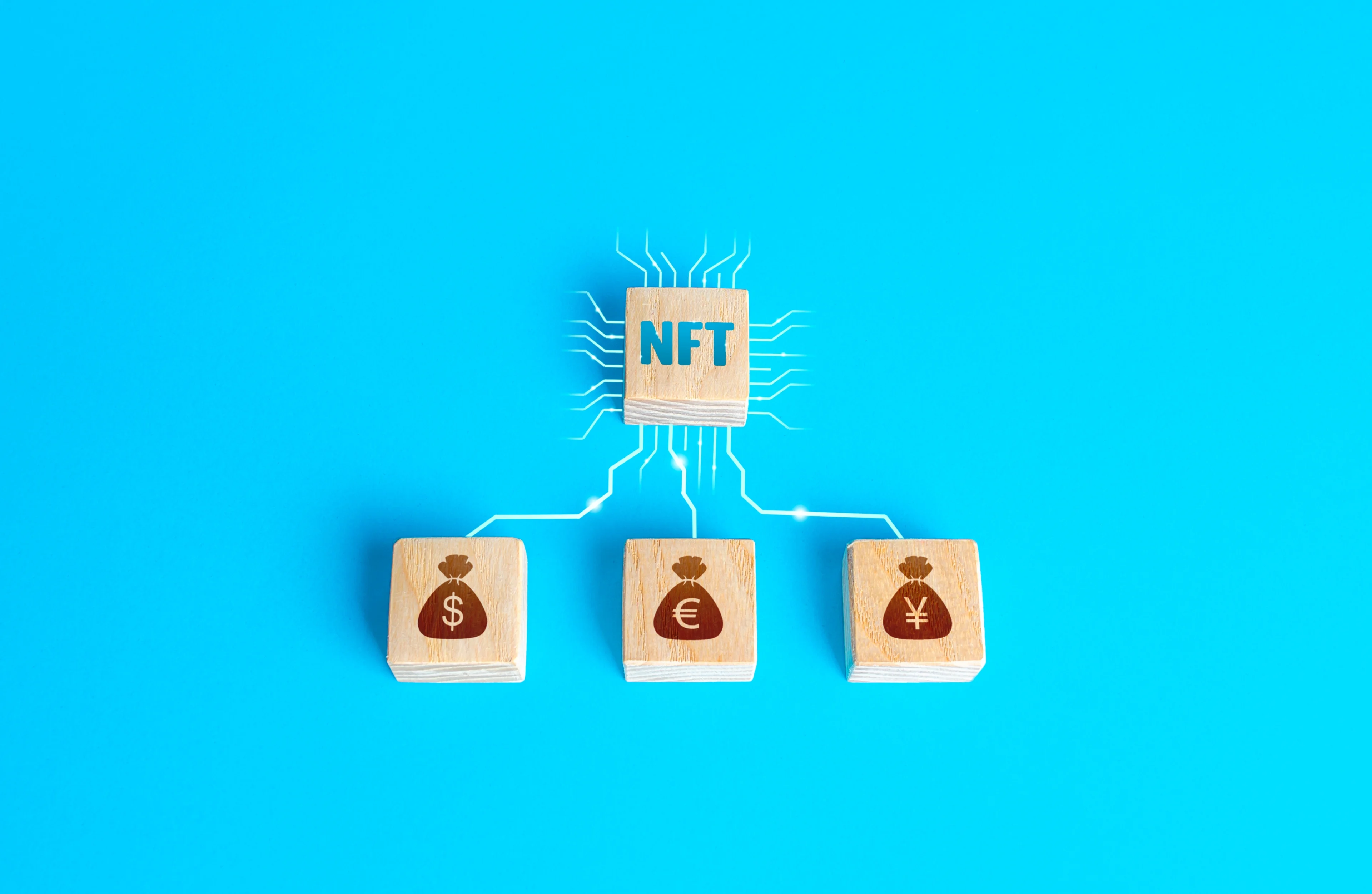Back to Blog
What Are NFT Royalties? A Guide to Decentralized Growth in 2023

Don Thibeau
Feb 14th, 2023
.5 min read

NFT royalty fees are a huge revenue generator for creators in the NFT space.
According to recent estimates, NFT royalty payouts total almost $2 billion per year.
NFT creators can program fees into their digital artworks to receive consistent income instead of relying on one-time sales
Royalties are a crucial aspect of NFT trading and it pays for creators, buyers, and sellers to know how they work.
This article will cover how NFT royalties work and how artists use them to earn a steady stream of revenue.
What are NFT royalty fees?
An NFT royalty fee is an extra payment on an NFT transaction that goes to the token’s creator. Artists, brands, and musicians set a “royalty percentage” on their NFTs before releasing them. As their NFTs trade on the secondary market, creators receive a slice of every sale.
NFT royalties are similar to traditional royalty fees for music, published works, or physical art. However, since NFTs trade on decentralized networks (aka blockchains), central authorities don’t handle these transfers. Instead, NFT royalties rely on blockchain technology to automatically send a portion of secondary sales to each creator’s crypto wallet.
NFT artists use royalty fees as a form of passive income. With this guaranteed revenue stream, creators reap long-term rewards from each successful NFT collection.
How do NFT royalties work?

NFTs rely on a technology called “smart contracts” to verify ownership and process transactions. These smart contracts can also recognize each token’s royalty fees and distribute funds to a creator’s crypto wallet.
You could think of “smart contracts” as “encoded agreements.” Developers use smart contracts to automate countless functions on blockchains like Ethereum and Solana. Once a smart contract recognizes a set of conditions, it fulfills its pre-programmed commands.
In the case of NFT royalties, smart contracts “know” when to send a percentage of NFT sales to the creator’s crypto wallet. When digital artists add royalties, they enter their desired rate into their NFT’s smart contract code. Therefore, whenever someone sells this NFT, the smart contract will instantly send a portion of the proceeds to the creator’s wallet.
For example, if a rock band wants 4% royalty fees on their NFT album, they add a 4% royalty charge to their NFT’s code before launching (aka “minting”) it. Following the initial sales for this NFT album, the musicians get a 4% cut of every secondary sale in their crypto wallet.
The revolutionary feature of smart contract royalties is there’s no mediator. All of the royalty transactions happen automatically over the blockchain.
What are the benefits of using NFT royalties?

Content creators face many unique challenges to earn compensation for their work. For instance, artists can’t profit from future price appreciation for their paintings. Instead, most artists sell physical artworks in a private sale or auction at one price. This means painters need to constantly create new works even if re-sellers profit from their original creations.
The Internet era adds additional complications to compensating creators. For instance, peer-to-peer file-sharing makes it difficult for musicians to profit off of their work.
NFT royalties address these issues by offering artists consistent payouts for secondary NFT transfers. Since all NFT transfers are transparent on each blockchain’s payment ledger, it’s easy to verify each token’s transaction history and ownership rights. Plus, smart contracts automatically take care of transferring royalties to their rightful owner.
With NFT royalties in place, artists enjoy constant compensation for their art on the secondary market. So, if an NFT collection suddenly surges in popularity, the creator will profit from their project’s success.
For example, Yuga Labs’ Bored Ape Yacht Club (BAYC) NFTs sold for just 0.08 ETH per token on April 23rd, 2021. However, as the BAYC gained more attention, the floor price for these NFTs skyrocketed, and Yuga Labs profited from their newfound hype. Thanks to the royalty fees for the BAYC and other NFT collections, Yuga Labs raised over $100 million in 2022.
How do artists set NFT royalty fees in 2023?

Dozens of major NFT marketplaces make it easy to set a royalty fee. Typically, before minting an NFT, artists will see an option to add a royalty percentage to their digital collectible. After creators mint an NFT on a marketplace, they’ll receive royalties from every secondary sale to their linked crypto wallet.
Just keep in mind that each NFT market has different Terms & Conditions for how it handles royalties. For instance, OpenSea lets creators set royalty fees up to 10% for their NFT collections. By contrast, Rarible lets creators charge royalty fees as high as 50%.
Also, not every NFT market enforces royalty payments. There’s a growing list of “optional royalty” NFT marketplaces that give buyers the power to pay partial or no royalty fees.
For example, the NFT market Magic Eden lets buyers pay 0%, 50%, or 100% of the royalty fees on NFTs. So, if someone re-sells an NFT on an “optional royalty” market, there’s a chance creators won’t receive a percentage of each transaction.
Artists must double-check the specific royalty policies on their preferred markets before choosing where to launch their collections.
Explore NFT royalty options with NFT.com
Since each NFT market has unique royalty features, choosing the right place to mint, buy, or sell digital collectibles can be challenging. To help NFT fans figure out these fees, NFT.com integrates with dozens of major NFT markets like OpenSea and LooksRare. From your NFT.com profile, you'll see the most attractive offers and royalty rates throughout the NFT ecosystem.
Whether you’re a creator or collector, NFT royalty fees are a crucial factor to consider. Let NFT.com help you find the perfect royalty fees for your NFT collection. In a few minutes, you can access deep liquidity in the NFT space through your NFT.com Profile.
FAQs
What’s the standard royalty rate for NFTs?
Following OpenSea’s example, many NFT markets let users set royalty fees between 1% - 10%. According to most reports, NFT creators usually charge 5% or 6% in royalties.
What are “optional royalty” NFT markets?
“Optional royalty” NFT markets are NFT trading platforms that don’t enforce royalty fees. SudoSwap introduced this policy in mid-2022, and many competing markets now have zero or optional royalty fees.


Solana’s Magic Eden is one of the largest NFT markets with an optional royalty fee policy. Although artists can add royalties to their NFT collections on Magic Eden, NFT buyers can pay 50% or 0% of the total royalty fee.
NFT markets use optional royalties to attract NFT re-sellers. The lower transaction fees on these sites attract traders interested in turning a profit.
The rise of “optional NFT royalties” remains a contentious issue in the crypto industry. Since markets can enforce royalty rules, creators may not get the desired compensation for their tokens.
However, some markets like OpenSea have a strict enforcement policy on royalty payments for NFT collections. Developers are also working on “on-chain royalties” to ensure NFTs always carry a royalty fee throughout the crypto ecosystem.
Do royalty rights transfer between NFT markets?
NFT royalty fees don’t transfer from one market to another. Since each market has unique royalty policies, one may not recognize the payment stipulations on another site. Whether a competing NFT market recognizes royalty fees depends on the website’s protocol.
What are NFT royalties paid in?

NFT royalties are in the native cryptocurrency of whichever blockchain the NFTs are on. For instance, if people mint their NFTs on Ethereum, they will get royalties paid in Ether (ETH). By contrast, those who set royalties for Solana NFTs will get Solana’s SOL coin.
Examples of other cryptos people receive for their NFT royalties include:
- MATIC for Polygon NFTs
- XTZ for Tezos NFTs
- BNB for BNB Smart Chain NFTs
- AVAX for Avalanche NFTs
Are NFT royalties taxable?
Taxes on cryptocurrencies vary depending on multiple factors, including how much people earn and where they live. However, more countries recognize NFT royalty payments as ordinary and self-employed income. Therefore, any profits from selling NFTs or receiving royalties are taxable.
Anyone collecting NFT royalties should speak with a certified accountant to learn more about their situation.
Related Posts

Why is everyone creating NFTs in 2022? - NFT.com
New NFT use cases are emerging every day. Find out what new opportunities N...

Don Thibeau
Jul 6th, 2022

The 10 most expensive NFT sales - Full Breakdown - NFT.com
2021 proved the sky is the limit for digital art sales. Find out why, and w...

NFT.com Team
Jul 18th, 2022

What Is an NFT? A Guide to Web3 in 2023
Want to learn about NFTs? Look no further! This article will provide a basi...

NFT.com Team
Jul 6th, 2022